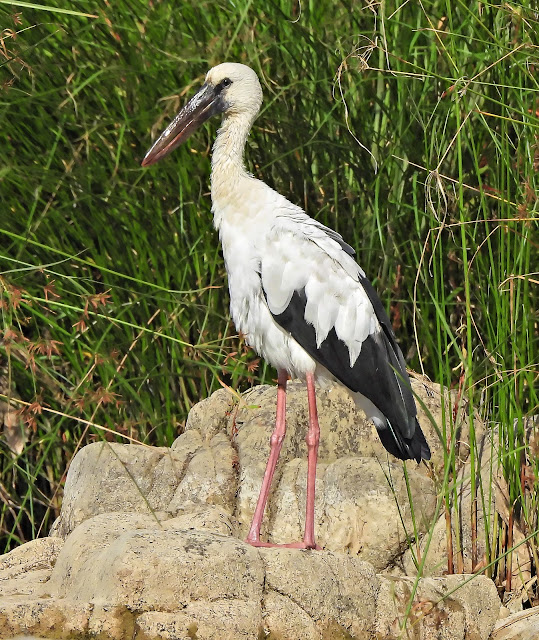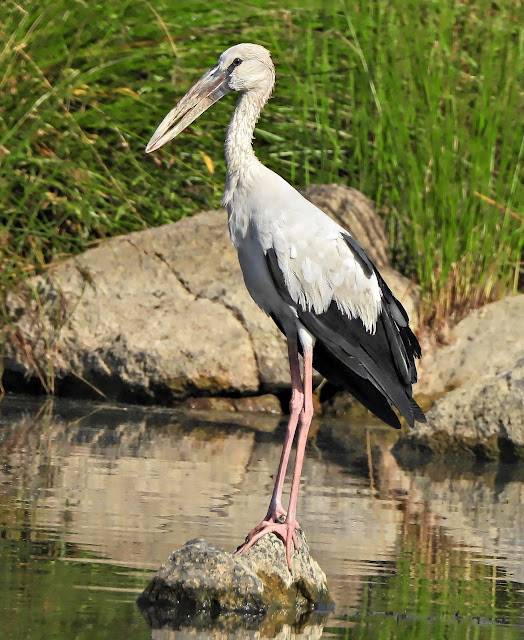The Asian openbill, a member of the stork family Ciconiidae, is a large wading bird recognized by its distinctive beak structure. The adult bird's beak features a notable gap between the arched upper mandible and the recurved lower mandible, a trait absent in the young. This species exhibits sexual dimorphism, with the males typically larger than the females. The plumage transitions from greyish during the non-breeding season to predominantly white in the breeding season, complemented by glossy black wings and tail with hints of green or purple iridescence.
To identify the Asian openbill, look for the unique gap in the adult's beak and its relatively small stature for a stork, standing at 68 cm in height. The bird's short legs range in color from pinkish to grey, turning reddish prior to breeding. In flight, the Asian openbill can be distinguished by its broad wings and neck outstretched, often mistaken for a white stork or Oriental stork from a distance.
Asian openbills frequent inland wetlands, avoiding river banks and tidal flats. They are adaptable, often seen foraging in crop fields, irrigation canals, and seasonal marshes.
This species is indigenous to the Indian subcontinent and Southeast Asia. It is a resident bird within its range but undertakes long-distance movements in response to climatic changes and food availability.
Asian openbills are gregarious, commonly found in flocks, though solitary individuals are not rare. They exhibit a soaring flight, utilizing thermals, and are known for their rapid descent into feeding areas.
The Asian openbill is typically silent but engages in a clattering duet during copulation. Low honking sounds accompanied by bill movements serve as a greeting between mates.
Breeding occurs post-monsoon, with the timing varying across their range. They build rough stick platforms for nests, often in colonies, and lay two to four eggs. Both parents share incubation duties, with chicks hatching after about 25 days.
The diet primarily consists of large molluscs, particularly snails. The Asian openbill has evolved a specialized beak to handle its prey effectively. It also consumes water snakes, frogs, and large insects.
The IUCN Red List classifies the Asian openbill as Least Concern, indicating a stable population without significant threats to its survival.





















